Matisse in the Studio, Royal Academy review - a fascinating compilation | reviews, news & interviews
Matisse in the Studio, Royal Academy review - a fascinating compilation
Matisse in the Studio, Royal Academy review - a fascinating compilation
Intriguing insight into the artist's relationship with his possessions
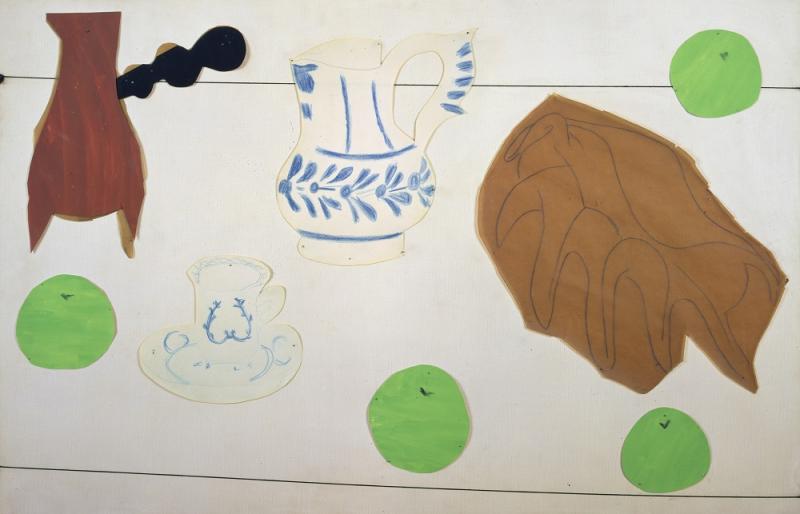
A 19th-century silver and wood pot in which to make chocolate, pertly graceful; 17th-century blue and white Delftware; a Chinese calligraphy panel; a 19th-century carved wooden god from the Ivory Coast; a bronze and gold earth goddess from South-East Asia. These are but a tiny sampling from the multitude of objects with which Matisse surrounded himself in his studio(s).
Matisse thought to ennoble the humblest of objects, to find delight in the unexpected. He collected sculpture and masks from Africa during a period when indigenous and often religious and ritualistic art was being appreciated out of context by the most avant-garde artists at the turn of the last century. Indeed primitivism (now no longer a word one can use with any ease) or ethnographic material was hugely influential for both Picasso and Matisse, as for scores of others.
What’s not to like about a fine selection of paintings, drawings, sculptures and collages by Matisse put together here with a significant collection of the objects among which he lived? His studio was integrated into his home for much of his life. Photographs show him at ease with his models in this crowded environment, and embody a contradiction: while Picasso lived hard, publicly and socially, Matisse was peculiarly genteel, often working in a white coat as though simply a technican, sometimes even in his suit.
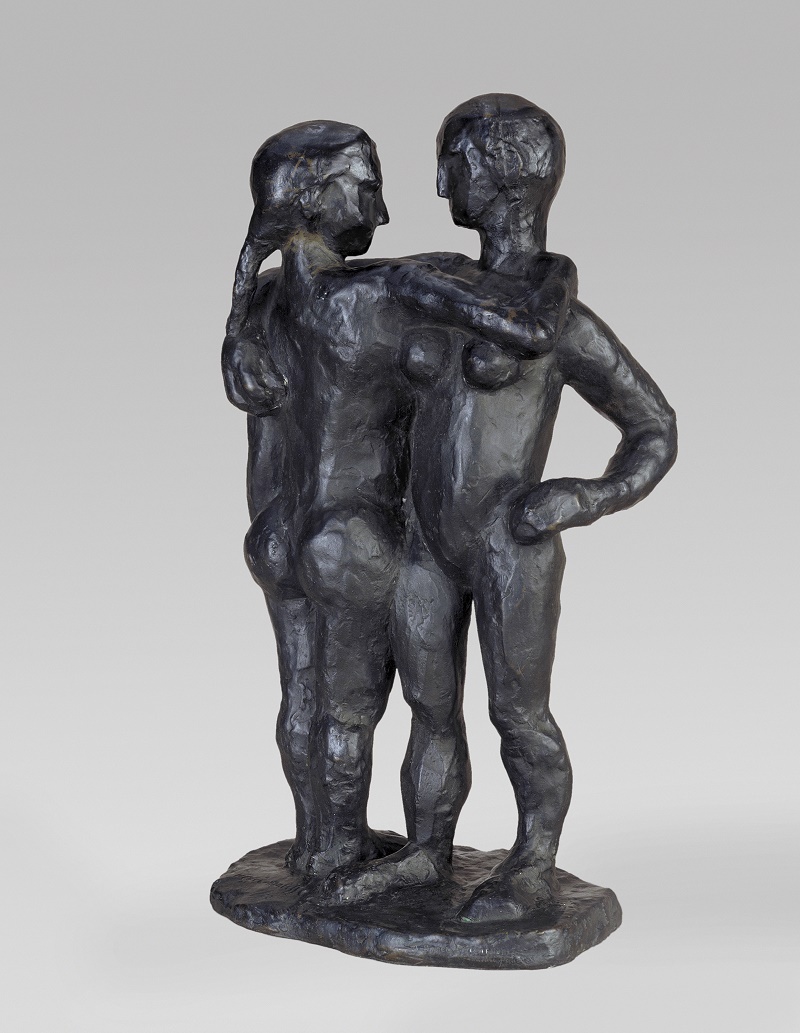 What is fascinating in this compilation is the chance to understand what, beyond his models and the views from his windows, caught his eye, often to such an extent that ownership became an important objective. The relationship between the painting or sculpture and its inspiration can be startlingly direct. The Serpentine, modelled in 1909 and cast in 1948, has a direct relationship to Nang Thoranee, the profoundly graceful and dignified south-east Asian earth goddess. His bronze Two Women, 1908 (pictured, Hirshhorn Museum and Sculpture Garden, Smithsonian Institution), is taken directly from the image of two young naked Tuareg women, arms entwined, whose photograph was reproduced in 1905 in a publication called L’humanité féminine. An arrangement of objects on a black marble table top – pot, cup and saucer, jug, fruit, shell – photographed in his Nice studio in 1946 is the infrastructure for the 1940 painting Still Life with Seashell on Black Marble (main picture). The value is to witness the talented alchemy of the artist: from the ordinary to art, transformed by the artist’s eye and hand.
What is fascinating in this compilation is the chance to understand what, beyond his models and the views from his windows, caught his eye, often to such an extent that ownership became an important objective. The relationship between the painting or sculpture and its inspiration can be startlingly direct. The Serpentine, modelled in 1909 and cast in 1948, has a direct relationship to Nang Thoranee, the profoundly graceful and dignified south-east Asian earth goddess. His bronze Two Women, 1908 (pictured, Hirshhorn Museum and Sculpture Garden, Smithsonian Institution), is taken directly from the image of two young naked Tuareg women, arms entwined, whose photograph was reproduced in 1905 in a publication called L’humanité féminine. An arrangement of objects on a black marble table top – pot, cup and saucer, jug, fruit, shell – photographed in his Nice studio in 1946 is the infrastructure for the 1940 painting Still Life with Seashell on Black Marble (main picture). The value is to witness the talented alchemy of the artist: from the ordinary to art, transformed by the artist’s eye and hand.
This is hardly an unusual way of looking obliquely at an artist’s work. But it is rare to see the real objects and their depictions united outside their home base, or brought together from several collections. The ethnographic material is marvellous, acquired with an artist’s eye: full of conviction, powerful and heavily stylised shapes, predicated on the human form, minimised, ornamented, played with to convey a sense of some kind of magical power. The brilliant minimalism of some of their representations of the human form are echoed in the drawings where just a handful of lines show us a face, a body.
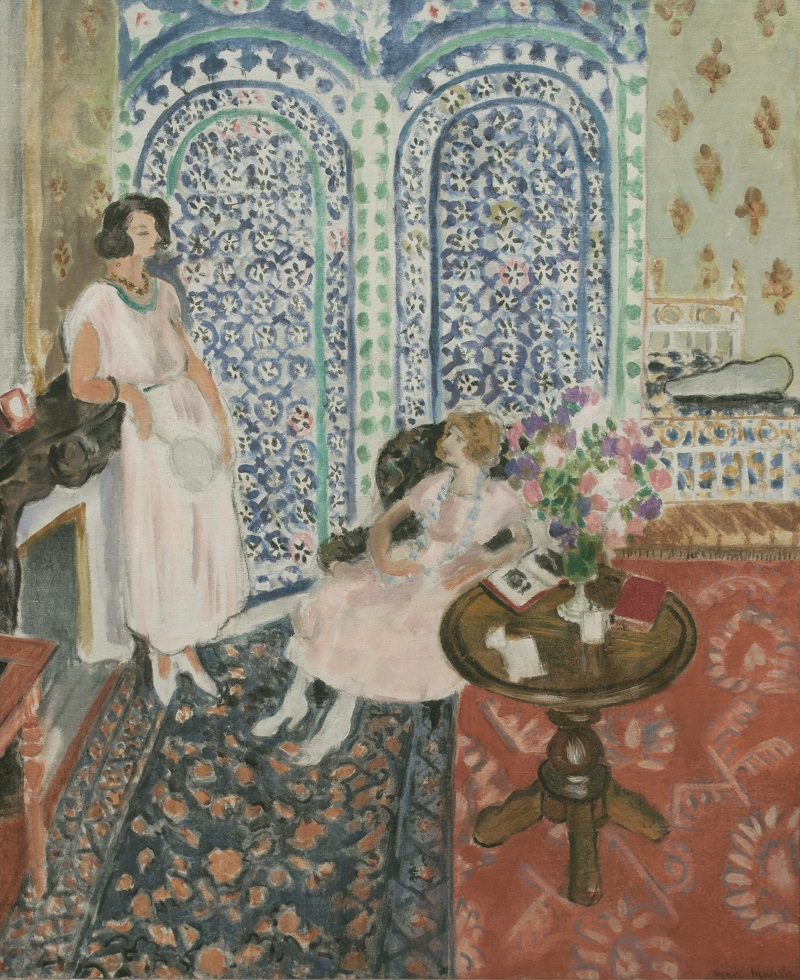 The bowls, vases, glasses and pots were obviously enjoyed for shape and colour, for the seduction of their smooth surfaces, and subtle decorations. The textiles exhibit elaborate and satisfying patterning, and wild combinations of colours. A whole wall is hung with such delights, faithfully echoed in a marvellously exuberant painting The Moorish Screen, 1921 (pictured © Philadelphia Museum of Art). Pattern was crucially important to Matisse: as he said, the subject and its background had the same value. And some of his most famous paintings are indeed of his studio: MoMA’s masterpiece The Red Studio is one such work. There are also some still-life paintings which centre on vases of flowers, the kind of arrangements we see in photographs of his studios.
The bowls, vases, glasses and pots were obviously enjoyed for shape and colour, for the seduction of their smooth surfaces, and subtle decorations. The textiles exhibit elaborate and satisfying patterning, and wild combinations of colours. A whole wall is hung with such delights, faithfully echoed in a marvellously exuberant painting The Moorish Screen, 1921 (pictured © Philadelphia Museum of Art). Pattern was crucially important to Matisse: as he said, the subject and its background had the same value. And some of his most famous paintings are indeed of his studio: MoMA’s masterpiece The Red Studio is one such work. There are also some still-life paintings which centre on vases of flowers, the kind of arrangements we see in photographs of his studios.
What is missing here and perhaps impossible to accomplish is any sense (beyond photographs) of what the light in the studio, and the profusion of objects of all kinds, actually looked and felt like. But we glimpse what he saw in the things with which he surrounded himself. It is not an accidental accumulation: he chose these objects from many times and geographies. This anthology is an attempt to show something of the mystery of Matisse’s alchemical – and physical – skill as he transformed the things he saw around him through the crucible of his imagination into his art.
More images from Matisse in the Studio (click to enlarge)
rating
Explore topics
Share this article
more Visual arts
 Yinka Shonibare: Suspended States, Serpentine Gallery review - pure delight
Weighty subject matter treated with the lightest of touch
Yinka Shonibare: Suspended States, Serpentine Gallery review - pure delight
Weighty subject matter treated with the lightest of touch
 Jane Harris: Ellipse, Frac Nouvelle-Aquitaine MÉCA, Bordeaux review - ovals to the fore
Persistence and conviction in the works of the late English painter
Jane Harris: Ellipse, Frac Nouvelle-Aquitaine MÉCA, Bordeaux review - ovals to the fore
Persistence and conviction in the works of the late English painter
 Sargent and Fashion, Tate Britain review - portraiture as a performance
London’s elite posing dressed up to the nines
Sargent and Fashion, Tate Britain review - portraiture as a performance
London’s elite posing dressed up to the nines
 Zineb Sedira: Dreams Have No Titles, Whitechapel Gallery review - a disorientating mix of fact and fiction
An exhibition that begs the question 'What and where is home?'
Zineb Sedira: Dreams Have No Titles, Whitechapel Gallery review - a disorientating mix of fact and fiction
An exhibition that begs the question 'What and where is home?'
 Yoko Ono: Music of the Mind, Tate Modern review - a fitting celebration of the early years
Acknowledgement as a major avant garde artist comes at 90
Yoko Ono: Music of the Mind, Tate Modern review - a fitting celebration of the early years
Acknowledgement as a major avant garde artist comes at 90
 Unravel: The Power and Politics of Textiles in Art, Barbican review - the fabric of dissent
An ambitious exploration of a neglected medium
Unravel: The Power and Politics of Textiles in Art, Barbican review - the fabric of dissent
An ambitious exploration of a neglected medium
 When Forms Come Alive, Hayward Gallery review - how to reduce good art to family fun
Seriously good sculptures presented as little more than playthings or jokes
When Forms Come Alive, Hayward Gallery review - how to reduce good art to family fun
Seriously good sculptures presented as little more than playthings or jokes
 Entangled Pasts 1768-now, Royal Academy review - an institution exploring its racist past
After a long, slow journey from invisibility to agency, black people finally get a look in
Entangled Pasts 1768-now, Royal Academy review - an institution exploring its racist past
After a long, slow journey from invisibility to agency, black people finally get a look in
 Barbara Kruger, Serpentine Gallery review - clever, funny and chilling installations
Exploring the lies, deceptions and hyperbole used to cajole, bully and manipulate us
Barbara Kruger, Serpentine Gallery review - clever, funny and chilling installations
Exploring the lies, deceptions and hyperbole used to cajole, bully and manipulate us
 Richard Dorment: Warhol After Warhol review - beyond criticism
A venerable art critic reflects on the darkest hearts of our aesthetic market
Richard Dorment: Warhol After Warhol review - beyond criticism
A venerable art critic reflects on the darkest hearts of our aesthetic market
 Dineo Seshee Raisibe Bopape: (ka) pheko ye / the dream to come, Kiasma, Helsinki review - psychic archaeology
The South African artist evokes the Finnish landscape in a multisensory installation
Dineo Seshee Raisibe Bopape: (ka) pheko ye / the dream to come, Kiasma, Helsinki review - psychic archaeology
The South African artist evokes the Finnish landscape in a multisensory installation
 Paul Cocksedge: Coalescence, Old Royal Naval College review - all that glitters
An installation explores the origins of a Baroque masterpiece
Paul Cocksedge: Coalescence, Old Royal Naval College review - all that glitters
An installation explores the origins of a Baroque masterpiece

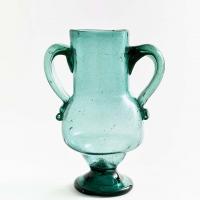
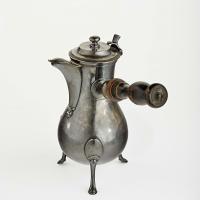
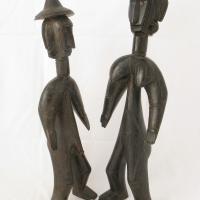
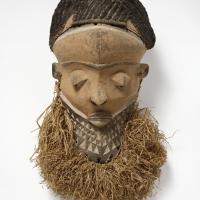


Add comment